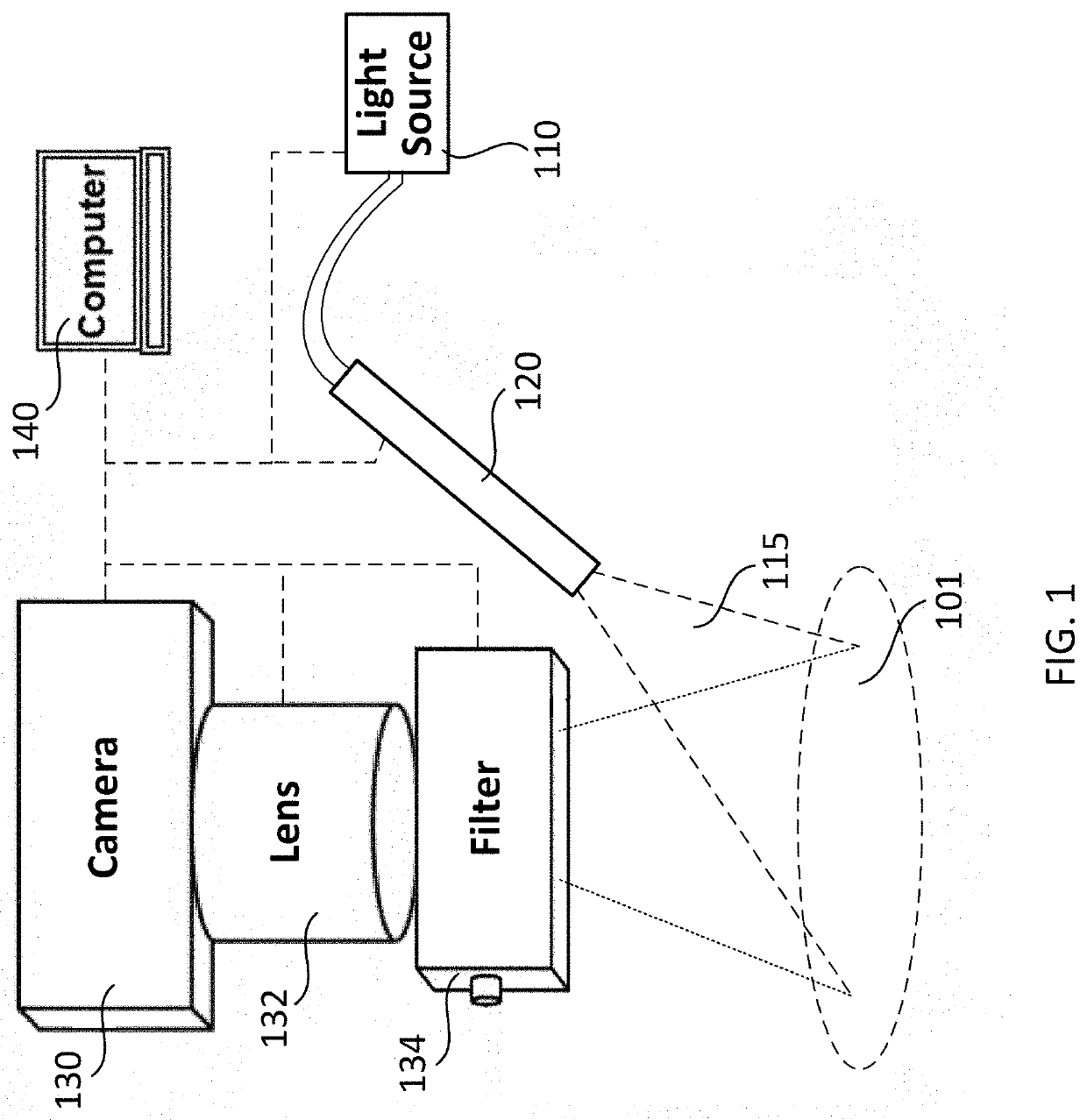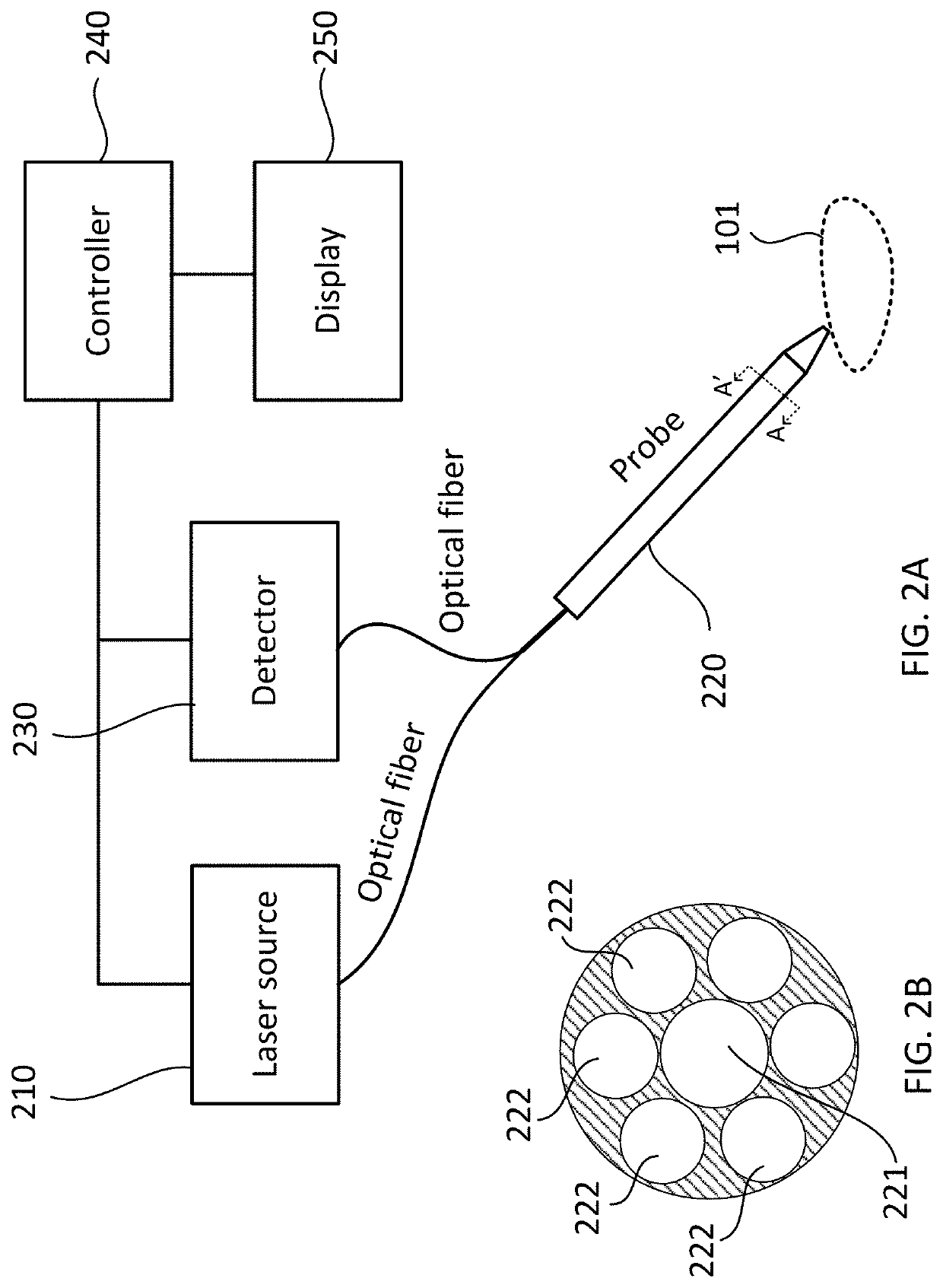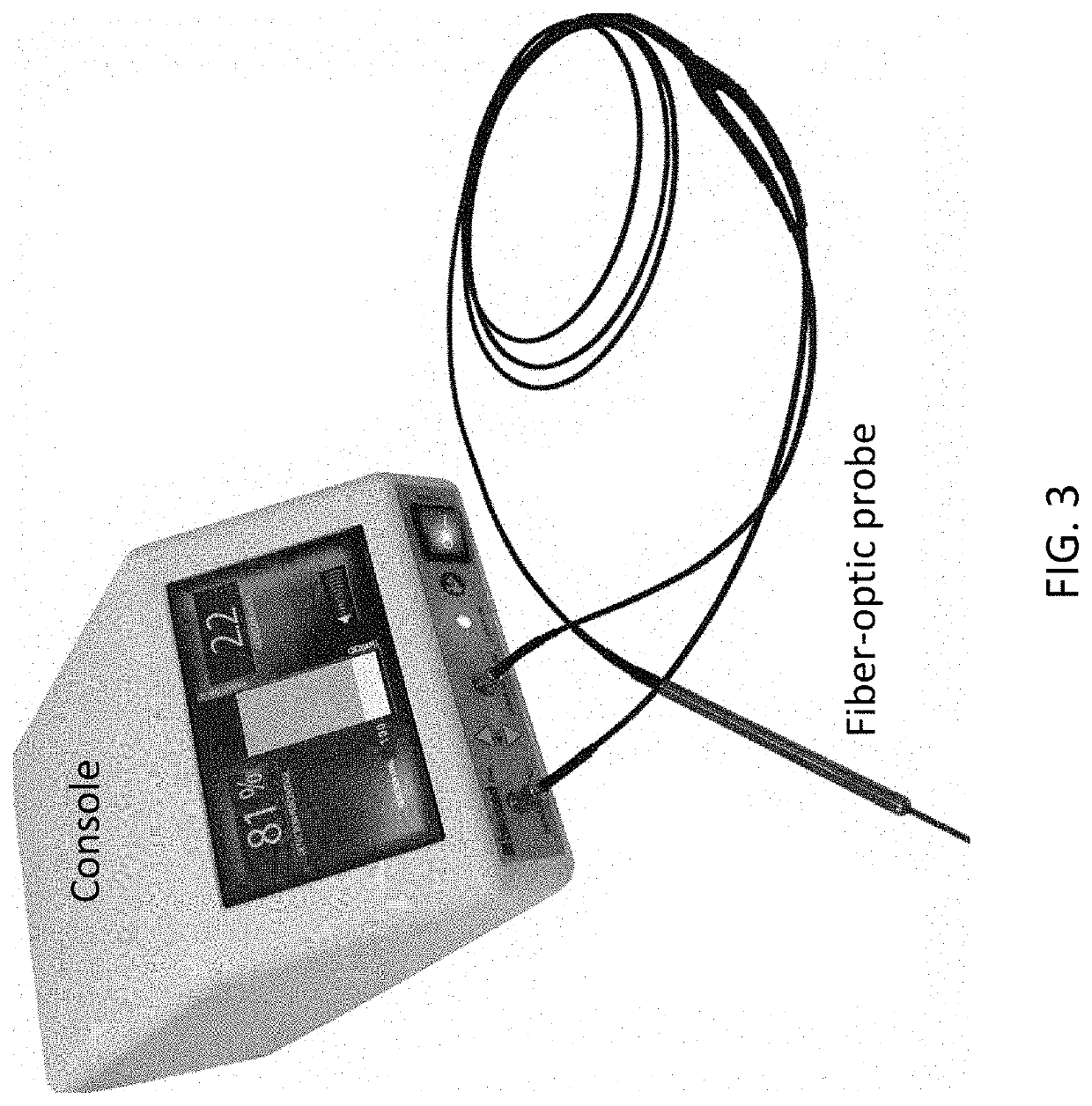System and method for surgery guidance
- Summary
- Abstract
- Description
- Claims
- Application Information
AI Technical Summary
Benefits of technology
Problems solved by technology
Method used
Image
Examples
example 1
Evaluate NIR Imaging for Surgical Guidance to Optimize Pancreatic Islet Extraction
[0132]Optimize Optical Detection of NIR Autofluorescence in Pancreatic Tissues:
[0133]Optical characteristics of pancreas may vary depending on its inherent tissue structure as well as the manner in which the organ is harvested and stored. To account for these differences, human pancreas—diseased and healthy—are optically characterized using both an NIR imaging and an NIR spectroscopy system that have been designed in house. Fluorescence images and emission spectra are collected from the tissue in five different locations to quantify the signal-to-noise (SNR) ratio. The data are compared between tissues for maximum fluorescence intensity and emission wavelength peaks. Different NIR wavelengths are investigated in combination with a variety of emission (long-pass) filters to determine which configuration gives the strongest SNR ratio. Similarly, islets cells and other type of pancreatic cells (acinar cells)
example 2
Physicochemical Characterization of Pancreatic Autofluorescence to Improve Islet Extraction
[0136]Physicochemical characterization of the fluorophore involves assessing the changes in NIR autofluorescence in pancreas tissue when subject to a variety of conditions, (i) change in temperature—fresh vs boiled vs frozen specimens, (ii) pH fluctuations—incubating pancreatic tissues in alkaline to acidic buffer solutions, (iii) solubility of fluorophore—specimens are powdered and then dissolved in a range of polar and non-polar agents to determine the best solvent for extracting this fluorophore. Biological characterization involves studying the changes in NIR autofluorescence with (i) tissue degradation—by incubating with different types of proteolytic enzymes—proteinase K, collagenase and (ii) pancreatic disease—NIR autofluorescence from pancreas is compared for healthy vs inflammatory vs cancerous conditions. Understanding the physicochemical and biological properties of the endogenous fluo
example 3
Design Separation Technique Using NIR Spectroscopy
[0137]Islet cell transplantation is a key treatment strategy adopted to treat insulin insufficiency due to permanent pancreatic damage arising from tissue trauma, tumor, inflammation, or Type ½ diabetes-related changes. Conventional approaches of islet cell extraction do not have an adequate yield with an extraction rate often <50%. It is found that the human pancreas exhibits autofluorescence when illuminated with near-infrared (NIR) light. The islet cells could be the source of the NIR autofluorescence in the pancreas. This unique property of the islet cells could be exploited to maximize the yield of pancreatic islet cells being harvested for transplantation.
[0138]This exemplary study addresses the aforementioned challenges by disclosing systems and methods of using near-infrared (NIR) autofluorescence to guide endocrine surgeries and islet cell transplantation.
[0139]Design Optofluidic Platform for Cell Sorting:
[0140]Microfluidic pla
PUM
 Login to view more
Login to view more Abstract
Description
Claims
Application Information
 Login to view more
Login to view more - R&D Engineer
- R&D Manager
- IP Professional
- Industry Leading Data Capabilities
- Powerful AI technology
- Patent DNA Extraction
Browse by: Latest US Patents, China's latest patents, Technical Efficacy Thesaurus, Application Domain, Technology Topic.
© 2024 PatSnap. All rights reserved.Legal|Privacy policy|Modern Slavery Act Transparency Statement|Sitemap



